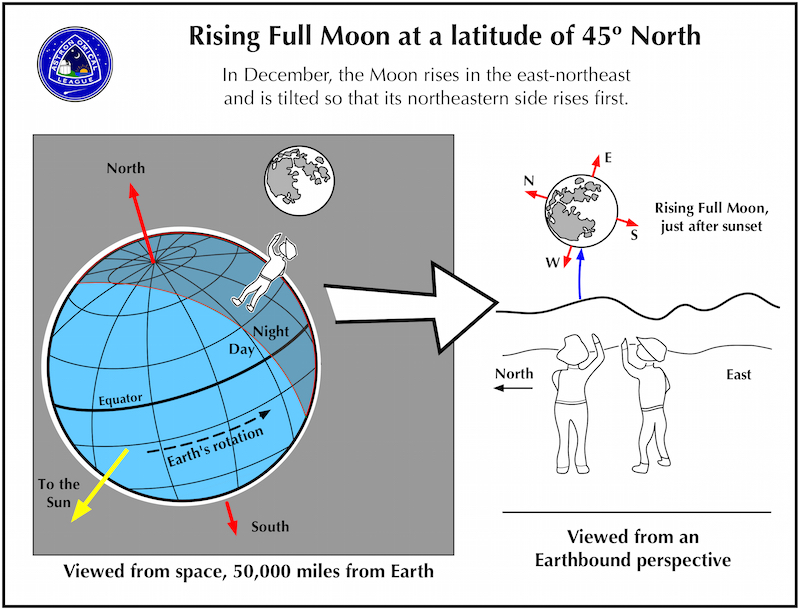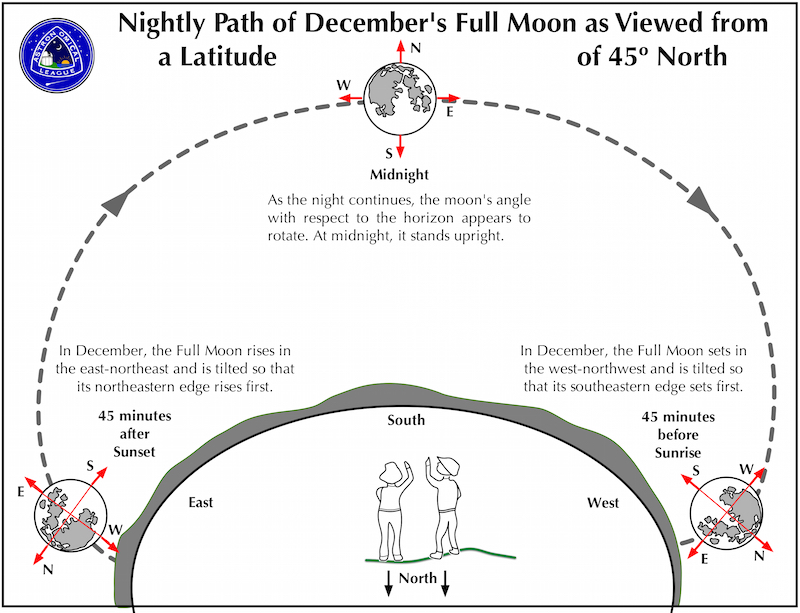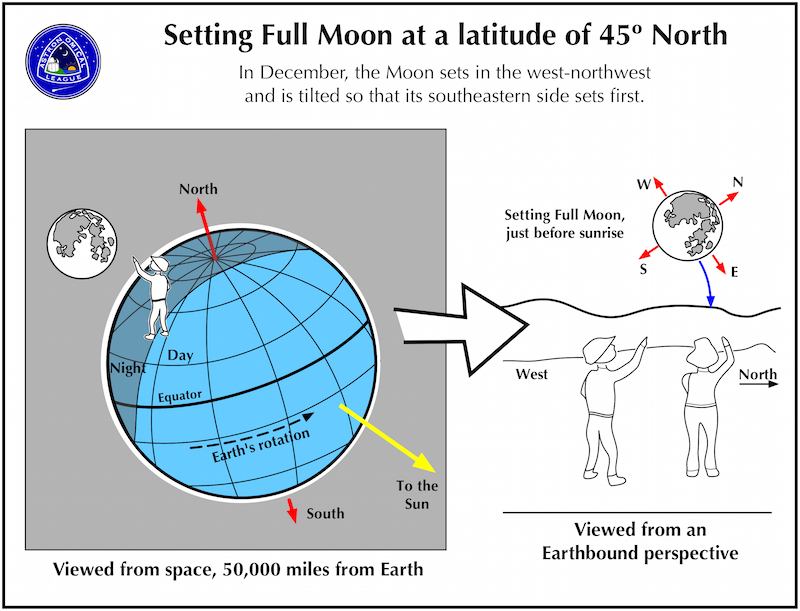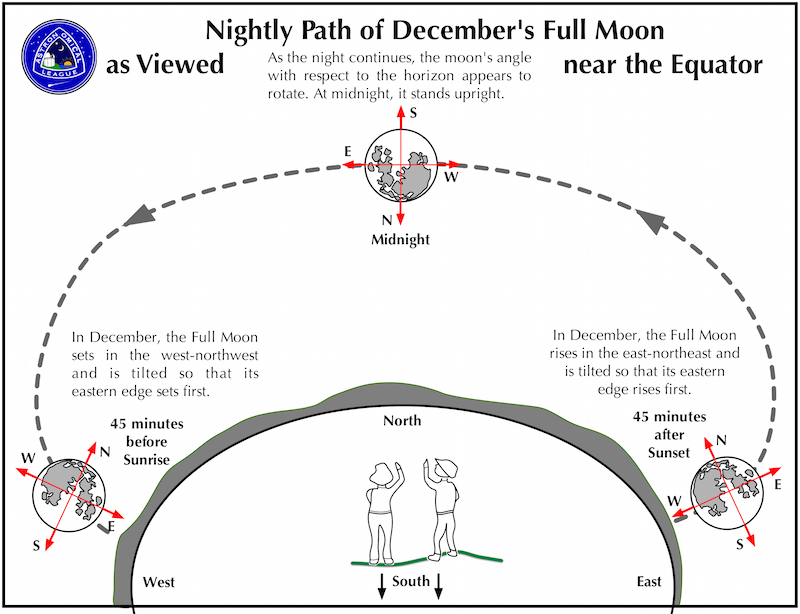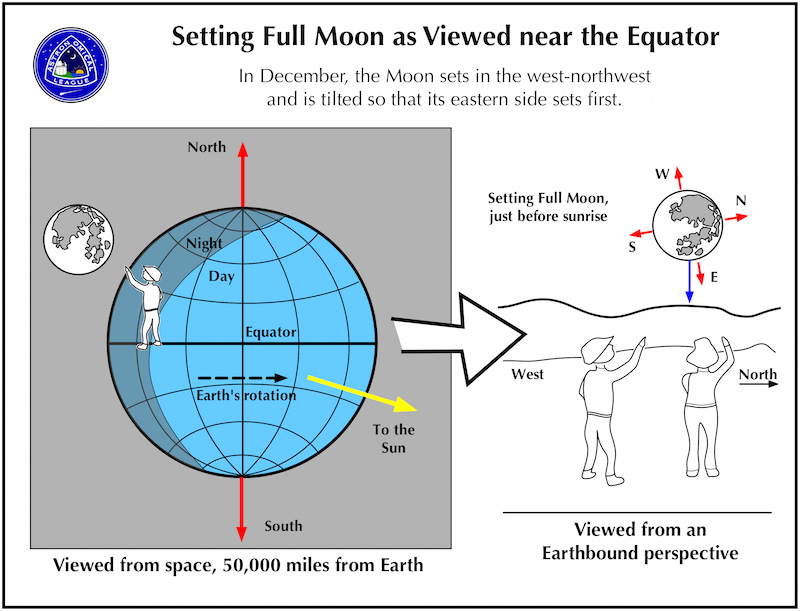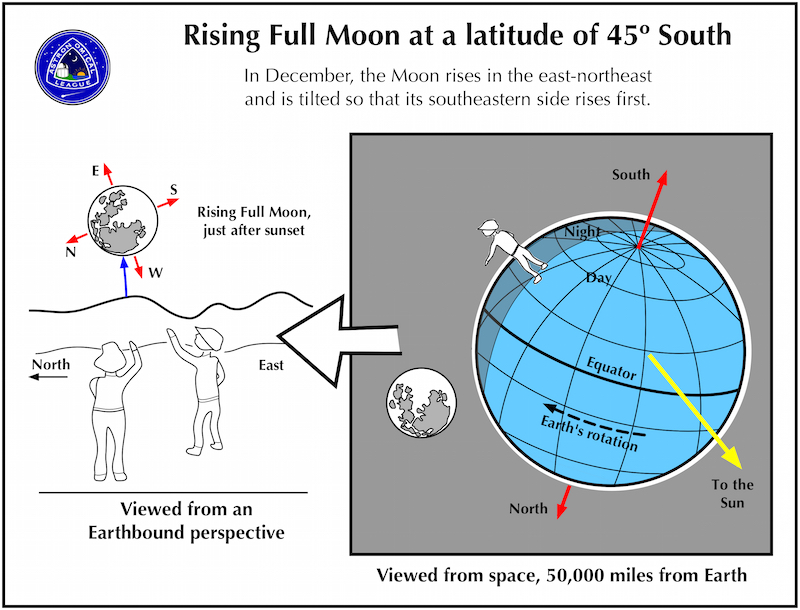- Created: Friday, December 01 2017 15:02
Sideways Moon / Sideways Earth
See how the moon seems to turn its face the sky during the night. Thanks to our friends at the Astronomical League and John Goss, we can bring this experiment to you.
How to:
- Observe the moon shortly after it rises. Draw its light and dark regions. If you have keen eyesight, you can do this without optical aid, otherwise use a pair of binoculars. In either case, if the moon’s light is too bright for comfortable viewing, wear a pair of sunglasses. Be sure to indicate the horizon and the direction of either north or south.
- As midnight nears, observe the moon and draw it again.
- Forty-five minutes before sunrise, observe it again and draw it a third time.
Notice that on each drawing the moon’s directional stance changes with respect to the horizon: When it rises, it is on its side; near midnight, it is upright; and as it sets, it is on its other side. (Astro-imagers call this phenomenon “Field Rotation.”) The moon doesn't really change its tilt in space, and Earth's north/south axial tilt doesn't change, either. What changes is the observer's positional tilt as our round planet rotates.
We are accustomed to think, when viewing Earth from a distant point in space, north is portrayed as being “up.” We also view ourselves as standing upright on our planet’s surface. Actually, as this activity demonstrates, we stand at an angle with respect to the polar axis.
This effect is apparent as viewed from near the moon, as well. NASA’s famous image of “Earthrise” taken from the Apollo 8 craft as it round the Moon in 1968 illustrates this (https://www.nasa.gov/multimedia/imagegallery/image_feature_1249.html). Earth is seen as slightly gibbous and tilted nearly horizontally, while suspended in space above the lunar surface. An imaginary person standing on the moon would be seen as being upright, just as a observer on Earth would be portrayed. Rotate the image clockwise 90º and Earth appears in a more familiar upright position.
The image of our planet when viewed from far in space is portrayed by another NASA shot showing both Earth and the Moon from a distance of 250,000 miles (http://apod.nasa.gov/apod/ap980129.html). Now, both Earth’s and the moon’s polar axes are “upright.”
If we, as Earthbound observers, tilt our heads 90º when viewing the rising or setting moon, it will be standing straight up, just as it appeared for the passing spacecraft.
Check out the following graphics for your latitude (click on the image to download a PDF):
0 Degrees or close to the equator:







